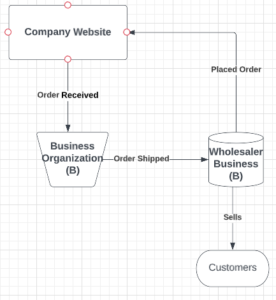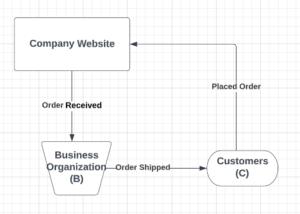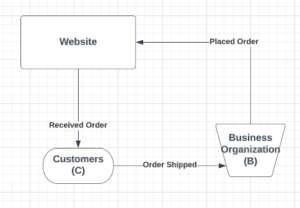Ecommerce means “the business of buying and selling things over the Internet.” Many businesses use ecommerce to reach out to clients all over the world and grow their sales. Ecommerce has several business models. Let’s review the most common models:
- Business-to-Business (B2B)
- Business-to-Consumer (B2C)
- Consumer-to-Consumer (C2C)
- Consumer-to-Business (C2B)
| Business Buyer | Consumer Buyer | |
| Business Seller | B2B | B2C |
| Consumer Seller | C2B | C2C |
Business-to-Business (B2B)
According to the B2B business model, a website sells its goods to an intermediary buyer, who then ultimately distributes them to the consumer.
For instance, a wholesaler may order a product from a company’s website, receive the consignment, and then ultimately sell it to the consumer when the consumer visits one of the retailer’s physical locations.
Example website: https://www.hubspot.com.

Business-to-Consumer (B2C)
The B2C business strategy involves a website selling goods directly to customers. Customers can view the items that are shown on the website. The consumer has the option to select a product and order it. The website will then email notify the business organization, which will subsequently ship the product or products to the consumer.
Example Website: https://www.amazon.com/.

Consumer-to-Consumer (C2C)
By placing their information on the internet, users of a C2C business model website may sell or rent out their assets, such as homes, automobiles, motorbikes, etc. The customer may or may not be charged for the website’s services.
By reading the message or advertisement online, another buyer may decide to purchase the product from the first client.
Example website: https://www.olx.in/.

Consumer-to-Business (C2B)
In this model, a consumer visits a website that displays numerous business organizations offering a specific service. The customer estimates how much he or she wants to pay for a specific service.
For example, a website may be used to compare the interest rates on personal loans and vehicle loans offered by various institutions. A corporate entity then approaches the client and offers its services after fulfilling the consumer’s requirements within the stipulated budget.
Example website: https://www.fiverr.com/.

So, When Creating a Business…
It’s important to consider which business model you’d like to pursue. Each model has its own particular attributes that can support what you’re trying to build. Whether building a B2B, B2C, C2B, or C2C model, we can identify areas to strengthen your brand and help you achieve the results you’re looking for.
For more information, contact our commerce experts today.


That was a great summary Shashi. Keep up the good work!!
Nice and Informative Blog!!
Thank you, Kanishk!
Thank you, Rakesh!
Informative blog, Thank you for sharing.
Thank you, Lokesh